Are you a sales enthusiast, who wants to elevate your sales game? Is your sales stuck at the same point for a long time? Then, this article about sales strategies is just what the doctor ordered for you.
“Learn from the mistakes of others. You surely can’t live long enough to make them yourself.” – Eleanor Roosevelt
As the quote suggests, learning from someone’s experiences is far better than learning it by yourself. Sales being the heart of the business, it’s crucial to crack the code to it. And this article is gonna help you with the same. By elaborating sales strategies used by sales experts and trainers.
Being a salesperson you might be aware that the term sales doesn’t mean to sell something. Tons of things contribute to the process of sales. Such as network building, prospecting, cracking a deal, and a lot more.
Before digging right into the topic, let us know what sales and sales strategies actually mean.
Often sales is misunderstood as marketing. In contrast, marketing is the act of creating awareness about the product or service among the audience. On the other hand, sales is turning the target audience into actual customers. It is like food for your business. Sales enhance business revenue and in turn, increase profits. Sales strategies are a collection of all objectives, actions, and resources that should be used to convert a prospect.
Let’s understand sales with the help of an example. The process involved in encouraging buyers to purchase a particular product is marketing. When buyers pay for the product and receive its ownership in return this process is known as sales. The tactics used to convince buyers to purchase a product are sales strategies.
Now, let’s move on to the sales strategies.
Explained by: Sonu Sharma
Sonu Sharma is the founder of Dynamic India Group. And also an Author, Educator, and Business Counselor.
Examine. Diagnose. Treat. It is a three-step sales strategy by Sonu Sharma to sell anything.
First, examine whether the prospect really needs your product/service. Then find out how you can help the prospect. And the last step is providing treatment that is selling your product/service. Always keep in mind that you have to follow these three steps in sequence. Skipping any steps won’t be helpful.
As explained by: Dr. Vivek Bindra
Dr. Vivek Bindra is a well-known motivational speaker and business consultant.
Look at sales from the customer’s perspective. If someone comes to you and starts selling their product you might feel they are desperate and annoying. That’s why never sell your product or service to customers. Rather, help them with your product/service. You can help customers either by solving their problems or by helping them to reach their goals.
As explained by: Dr. Vivek Bindra
This is yet another sales strategy by Dr. Bindra. You clearly know that you don’t have to sell but help your customer. Still, you can’t do that without knowing the actual problem of your customers. Before prospecting, positioning, and presenting you need to find out customers’ needs and help them with them.
As explained by: Dr. Vivek Bindra
There is a whole hierarchy of prospects. Viz, initiator, influencer, decision taker, buyer, and consumer. For selling your product you need to understand who’s the decision maker. To find out who’s the decision maker you need to understand any company’s organizational structure.
Let’s understand this with the help of an example, in the case of kids’ health drinks. Kids are the consumers but targeting kids won’t be helpful. You have to Target the person who’s responsible for taking decisions. That’s the mother of the child.
As explained by: Bhupendra Singh Rathore
The agreement frame is a golden rule of sales. It is a technique of framing questions that will make your prospect agree with you. Once you make prospects agree with you; the sales process becomes much easier. The key to this technique is to believe in your product and make prospects agree with you. Make them agree with you 25-30 times during the pitch. You can ask personalized questions too.
Explained by: Paritosh Sharma
You have gained your customers’ trust, you understood your problem, and provided proper solutions still you are unable to crack the deal. In this case, you need to be straightforward and ask your prospect what’s holding them back. You have to create a meaningful relationship with your prospect. Make them believe that you’re also their partner, not just the sales vendor.
Explained by: Anurag Aggarwal
The sure shot way to attract customers is to offer them irresistible schemes. These schemes can buy one get one, flat X% discount, cashback, free shipping, warranty, or exchange offers. All you need to leverage these schemes to increase your sales.
Let us have a look at a few schemes in detail
Explained by: Pushkar Raj Thakur
Pushkar Raj Thakur is one of the leading business coaches and motivational speakers in India.
The process of selling never ends at the first presentation. You need to remind prospects about your product/service through regular follow-ups. At least 5 follow-ups are required when you want to sell genuinely. Regular follow-ups play an important role in closing deals. While following up make sure that you don’t annoy the prospect. Know their problem, and have a genuine conversation with them. Avoid follow-ups where you push your pitch all the time.
Explained by: Ashutosh Pratihast
As the name suggests you don’t have to run after customers but attract them towards you. Ashutosh says most people have a chewing gum approach to making sales. That means they keep running after customers tell them about products for hours and hours and still aren’t able to close the deal. The problem with this approach is that the prospect gets annoyed by you and in some cases doesn’t respect you. The sure-shot solution to this is to be a magnet. Do something unique, an offer that no one is offering in the market so that people will be attracted to you. This strategy also saves your time and energy.
Explained by: Puneet Jindal
Puneet Jindal is a motivational speaker and business coach. He has worked with over 200 MNCs.
Frame a sales pitch that will provide solid reasons to prospects to buy your product. This ‘why’ may look like- why someone buys from you, why your product is better than others, why to use the product, and more. In a nutshell, you have to design a detailed sales pitch that will give your prospect all the required information.
Explained by: Andy Paul
Andy Paul is an author, sales coach, and founder of The Sales House. He has been ranked #8 on LinkedIn’s list of Top 50 Global Sales Experts.
In his book zero-time selling Andy explains inbound leads and how to deal with them. According to him, inbound leads are scratch-off lottery tickets. You have to respond to them right away, preferably within an hour. Make sure that each and every lead you receive enters your CRM (customer relationship management) system and gets followed up. Analyze your leads and measure your growth from time to time. This will help you to enhance your customer experience and increase sales.
Explained by: Belal Batrawy
Belal offers no-fluff and practical sales tactics and advice. If you want to learn in a short time then Belal is your guy. Bele Batrawy is a startup advisor, speaker, and top sales influencer.
Humans are emotional animals. People will forget what you told them but they will always remember how you made them feel. In one of Belal’s LinkedIn posts, he discussed how emotions play a vital role in sales pitches. He further describes the factors that contribute to turning prospects into customers. Your flow of talking, energy, knowledge of product or service, and stories your prospect will relate to.
Explained by: Mark Hunter
Mark Hunter is a sales trainer, speaker, and sales leader. He is also the author of “A Mind for Sales” “High-Profit Prospecting” and “High-Profit Selling: Win the Sale Without Compromising on Price.”
In one of Mark’s sales strategies, he talks about 7 golden pricing rules to close more deals. Never put your prices in front of prospects right away. First, you need to understand- what their needs are. Are you dealing with a decision-maker? And will the prospect make a decision right now? Without getting answers to these questions you are just shooting in the dark. Secondly, make the offer personal. Try to deliver your price face to face. If you send your prices via email chances are your prospect will compare them with your competitors and would find you expensive. Don’t just sell the product, educate prospects about its outcome as well. Trigger the urgency and have time-sensitive pricing. Offer a high-priced package and then the low-priced. Have confidence in your product while pricing it. Discounts are given when you don’t believe in your product. And lastly, stay in your lane. Have your own customer base.
Explained by: Dan Lok
Sell your product/service in the package. Packages increase benefits to customers. Packages not only offer more benefits to customers but also cut costs for them. The package that’s providing more value than its cost makes an irresistible offer. So instead of giving a discount on actual cost make a combination of related products/services that will temp the buyer to purchase it. The best way to price a package is to have a 1:10 ratio of cost to benefit. While creating a package, understanding the current and future needs of customers is really important.
Explained by: Dale Dupree
Dale Dupree is a coach, trainer, consultant, and Founder and CEO of The Sales Rebellion. His sales strategies are mainly focused on teaching the sales team to rebel against “typical” results. Dale talks about B2B, sales, and experiential marketing. Dale’s sales strategy can literally change your views about sales. It will transform your business and life. Dale’s Sales Rebellion not only discusses making sales but also building your business and personal life.
One must join The Sales Rebellion if they want to learn sales unconventionally. Sales rebellion offers one-on-one sales coaching, team coaching, mentorship, Bootcamp, and much more.
Explained by: David Meerman Scott
David Meerman Scott is a marketing and sales strategist and best-seller author of 12 books.
Whether it’s B2B or B2C every business is P2P that’s people to people. Know your customer, understand their problem, and provide them with a suitable solution. Customers are not interested in how incredible your product is. Instead, they are interested in what problem your product is solving or what value it is adding. The secret sauce of successful B2B sales is to connect with people.
“You sell more when you stop selling”
– David Meerman Scott
Explained by: Jeffrey Gitomer
Jeffrey Gitomer is a business trainer, speaker, and author. He has written over 20 books that spill the secrets of great sales and marketing strategies.
Before every prospect meeting salesperson should know a few details about the prospect to build trust and connection. These details include the name of the prospect, the firm they belong to, their LinkedIn profile, and some basic Googleable details. Attract the prospect by your company’s tone and content. Engage with them on a personal level. And build a connection on the basis of things they find valuable. Following these three steps will surely upscale your sales.
Explained by: Alice Heiman
Virtual sales seem hard for many salespeople these days. But it’s not true. They don’t have to do more but do better. By improving their skills, proper guidance, and gaining little confidence salespeople can definitely ace virtual sales.
Alice describes these three keys as part of her sales strategy: customer engagement, relationships through video, and drive conversations.
Customer engagement: provide salesperson proper training on engaging people during the sales process.
Relationship through video: you must train your sales team to sell on video calls. By training them to sell virtually they will be able to engage with customers better.
Drive conversations: provide salesperson content and compelling messages that will encourage buyers to take action and will drive the conversation.
Explained by: Jill Konrath
Jill Konrath is a well-known sales strategist, speaker, and author of multiple sales books. Jill shares great insights on sales and marketing regularly via her blog.
You had a great sales call, shared all the information with a prospect, and still got ghosted? This might happen because your prospect got overwhelmed with all the information they received. To make this sale call successful you need to slow down and follow a few uncomfortable strategies.
i) Research: Research thoroughly about your prospect.
ii) Take logical steps: You need to create curiosity among your prospect that will provoke them to know more or schedule more follow-up meetings. That’s what taking logical steps looks like.
iii) Share interesting details: Use story-telling skills to sell your product. Make your product/service relatable for your buyer. You can also talk about the commonality between you and the prospect.
Explained by: Max Altschuler
You must be living under a rock if you don’t know about SalesHackers despite being in the sales profession. Max Altschuler is the founder and CEO of SalesHacker and the author of Hacking Sales.
According to Max, a sales win is a combination of the right time, the right person, and the right message.
For Sales strategies like these, you need to leverage your marketing to get more inbounds thus making more sales. Do extensive research about your target audience, make an ideal client persona, and plan your content according to that. In the process of generating leads, automation will be your best friend. Use automation to save your time and effort.
Explained by: John Barrows
John Barrows is a sales trainer we all need. He has helped big firms like LinkedIn, amazon, google, and box to skyrocket their sales.
You must have seen so-called empathic emails that start with ‘hope you are doing good and then proceed to sell. True empathy is a blend of personalization and relevance. You must understand the current need of your prospect. To know about their current needs you revisit your ideal customer profile (ICP) cause they change after a while. If your buyer personas haven’t changed at least their priorities might have.
By showing real empathy towards your client, they will be happy to tell you about what kind of messaging resonates with them. So your salesperson can use that in prospecting for sales.
Explained by: Trish Bertuzzi
Trish Bertuzzi is the founder and CEO of The Bridge Group and author of “The Sales Development Playbook.”
The sales industry has changed over a couple of years. Buyers are constantly bombarded with the content. That’s why they are no longer interested in listening to your sales pitch.
There is only one thing that will help you to get buyers’ attention. That’s curiosity. Be curious about buyers’ needs and wants. Ask questions and research them well. If you are not curious about your buyer you will never be a good salesperson.
Explained by: Chole Dougherty
Story-telling is a great tool to increase sales. But in the ocean of content where everyone is competing to grab customers’ attention, you might miss a chance. Sprinkle a little bit of suspense and conflict into your story to keep the audience hooked. Insert suspense in your story somewhere, like at the beginning or middle, or at the end. Keep people invested and interested in your offer.
Explained by: Tom Abbott
Tom Abbott is CEO at Soco Sales Training and AMC NPO Solutions and author of ‘social selling.’
The 80-20 is the golden rule to crack any sales deal. You need 80% listening and 20% talking. You have to break that 20% further into 10-10 percent. 10% should be questioned. Ask your client about their goals, challenges, aspirations, problems, and details that will help you to know the client better. Now the remaining 10% is all that you need to sell. Know your client thoroughly, let them elaborate on their problems, and after that help them with your service or product.
Explained by: Patrick Dang
Patrick Dang is the founder of The Parallax. He’s an international sales trainer and has trained over 70,000 students to get started with sales.
Don’t Let people think you are desperate to sell. Instead, make people think it was their idea to purchase.
Ask your prospects what problem they are facing. How long have they been facing it? And what have they done to fix it?
When you understand customers’ problems they are more inclined towards purchasing your product/service. By providing solutions to customers you subliminally make people think that they need your service/product.
Explained by: Brian Tracy
Brian Tracy is a motivational speaker and self-development author. He has written over 80 books, some of his popular books are Eat that frog, No Excuses, and Earn What You’re Really Worth.
Once the customer decides to buy from you must think about how you can increase the size of their sales. Thus increasing the cash flow. You can increase sales size by giving your customers good customer service. When a customer trusts you he/she becomes open to more suggestions from you. You can upsell the expensive product/service or cross-sell relevant products to a customer.
Explained by: Brian Tracy
No matter how great your product is, it won’t make sales until you have the required skills. Some people are natural sellers but some need to learn it. Most sellers need to learn and practice the art of selling to make sales. Even though you are naturally good at it you have to hone your skills from time to time. Sales training is your one-stop solution. It not only helps you to learn skills but also opens doors of opportunities for you. You will be able to connect with a lot of creative salespersons and leaders.
Explained by: Brian Tracy
Of course, you aren’t the only one who’s selling the same product/service in the market. There are tons of sellers from which your buyers will purchase. You must be able to explain to customers the advantage of buying from you instead of your competitors. For that, you need to know how much grass is greener on the other side. That means what your competitor has to offer. You need to know their prices, claims, benefits, and what’s different they are offering.
Explained by: Daniel Pink
Daniel Pink is the author of multiple bestseller books. In 2014 he was a host and a co-executive producer of the National Geographic Channel social science TV series Crowd Control
When someone talks about social proof the first thing coming to your mind might be the advertisements, logos, and posters. But social proof is far more than that.
Social proof proves that you share something in common with your prospects. It also helps to gain customers’ trust.
While convincing someone to purchase your product try to add social proof to the conversation. Mention how you helped your previous client who had similar concerns. When you describe that people from the same background as your prospects invest in you they trust you more.
Explained by: Daniel Pink
Have a word that describes your business perfectly. It can be marketing, food, design, content, or anything that describes you the best. If you are struggling to get that one word ask your clients, friends, or employees what comes to their mind when they hear about your business. Like when someone says ‘Google’ you immediately think about search.
Embrace your business. Don’t try to be something that you are not. Trying a bunch of things will make your customer confused about your offers. Always be clear about your goals and ambition.
Explained by: Dan Pickett
Differentiate yourself from your competitors. Have something unique to offer. If you are yet another business selling the same product. You have high competition and chances are people won’t buy from you. Everyone wants the best.
Doing what others are doing might seem safe and comfortable. But it won’t be helpful in the long run. So, get all your courage together and put out your unique ideas. Do something that no one is doing or doing incorrectly. Try and test that one unique thing and once you get it right, market it aggressively.
Explained by: Daniel Ambrose
Everyone loves stories, no wonder it’s one of the best ways to pitch. Stories engage people better and capture prospects’ attention. Stories give weight to your sales pitch. This means people understand it better and remember it for a long time. Storytelling has immense power. Storytelling when done right, your prospect will recommend you and even defend your product.
The beginning of the story must be personal and dramatic. Exaggerate the needs of the reader. When done right, storytelling will capture their attention and involve them in the drama of the story. This creates a sense of tension and urgency among the prospect.
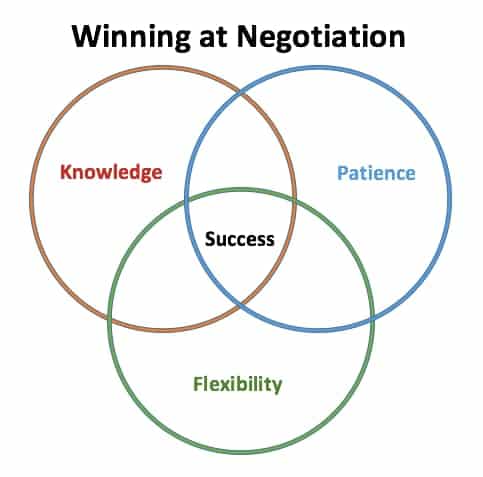
Explained by: Dr. Chester L. Karrass
Dr. Karrass is the founder of KARRASS. He is the author of four books that elaborate on negotiating.
Dr. Karrass strongly believes that Patience is one of the most powerful negotiation tactics. As negotiation can literally make or break the deal. You need to be extra cautious while negotiating. And patience is the only thing that will save your deal.
on the spur of the moment, you may offer heavy discounts or agree on something you won’t be able to fulfill. So always think before the next step. In the end, it might get hard to convince prospects but you need to change their no to yes with your skills.
Explained by: Jack Maverick
Free trials are a common yet effective sales strategy. As customers are unsure about investing in your product, free trials show them its true potential of it. However, don’t offer too short or too long trials. Keep it in such a way that your prospect will get to know your product just right. After the trial ends, approach your customer for feedback and pitch them. Even though people don’t purchase your product after a trial, genuine feedback will help you to improvise it. Positive feedback will help you to attract more customers while a bad one will tell you about the improvements needed.
Explained by: Alan E. Hall
Alan says, The goal of any business is to make money, but that objective is easier to reach when we listen to customers and understand their needs. The best way to do this is by listening to what they tell us.
The biggest mistake one can make in sales is focusing more on the product and not listening enough to the customer. Prospects might feel ignored if you pitch your product/service aggressively.
Explained by: Jill Konrath
SNAP Selling is the book written by Jill that provides a framework to deal with busy customers. There are four essential components to crack sales when it comes to modern customers.
i) Beep it simple: don’t be fluffy. Keep your offer simple and easy to understand
ii) Be valuable: modern buyers are getting overwhelmed by content. Make your offer stand out in the crowd.
iii) Always align: align your business objectives with the core beliefs of the prospect.
iv) Raise priorities: nowadays buyers have particular priorities you need to take care of.
Explained by: John Doerr
In sales just saying my goal is to increase sales is not enough. You need to specify your goal more clearly. If you are not able to set a particular goal, start with yourself. Set personal targets, it can be as simple as annual sales. After setting a goal, ask yourself if you are passionate about achieving this goal. Will the target keep you going until you achieve it? Once you get the answer ‘yes’ you are good to go.
Explained by: Marc Wayshak
Marc is the founder of the sales insights lab. It’s a sales training and data research firm.
The Game Plan Selling DSP is the only sales strategy you need to know according to Marc. he has developed this strategy over years of working in the sales industry.
The three main pillars of The Game Plan Selling DSP are-
1. Distinct: This is one of the most common strategies still some salespeople sleep on it. You have to do exactly the opposite of what everyone else is doing in the market.
2. Systematic: Have a repeatable and proven system for sales. This includes three components. The first is connect. Connect with your prospect at the level they expect you to be. The second is a disqualification. That means getting rid of prospects that are a good fit. And the third is constant feedback presentation. Whenever you make a sale don’t forget to ask for feedback.
3. Prospecting Playbook: The prospecting playbook is important so that you can avoid up and down graphs of sales.
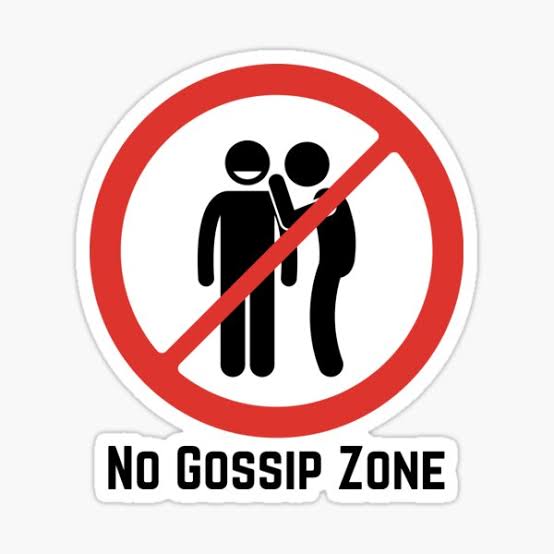
Explained by: Vanessa Van Edwards
There is something called spontaneous trait transfer. This means when you talk negatively about someone they automatically put those traits on you. That means when you are criticizing your competitor’s product your prospect can’t help but put that onto your product. So next time someone comes up with gossip, simply say no comments.
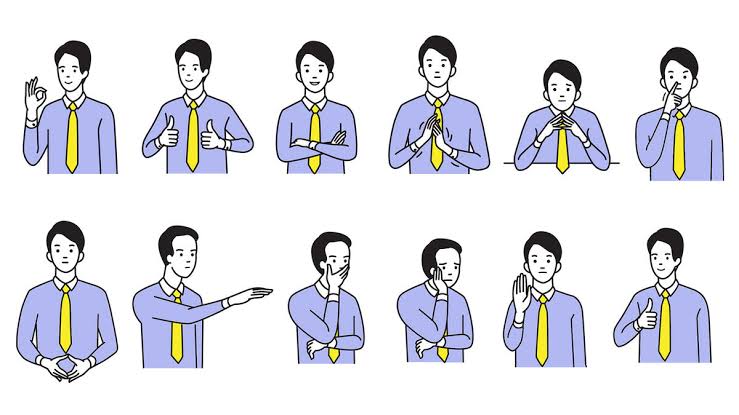
Explained by: Vanessa Van Edwards
Numerous studies have proven the immense potential of good body language. One study has shown an increase of 56% in sales after a single training. Learning power of great body language will take your sales game to next level.
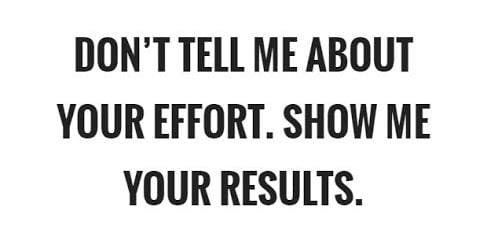
Explained by: Adam Erhart
If you are using sales strategies designed for products or services it will fail. As products and services are completely different things. Unlike products, people can’t physically feel or check the service. You can always provide free trials, demos, and graphical representation but that’s not enough. The major mistake one makes while selling services is they focus more on features and benefits rather than end results. People are not interested in the nail but the frame that they will hang on it. That’s where finish line language comes into the picture. Talk more about the end results than just the service.

Explained by: Adam Erhart
Another common reason why service-based businesses fail is that they don’t have good features to benefits ratio. Businesses focus more on features but not on the relative benefits. A feature is something that does and benefits what it does for you. In other terms, the feature is about the service while the benefits are about the customer. The feature enables the benefits but people just care about the benefits, not the features.
I know it’s getting complicated. Let’s understand it with an example, a cup has a handle that’s a feature but the handles that save your hand from getting burned is the benefit.

Explained by: Greg Hickman
If you are a service-based business some of your services might be customized or one-on-one. Which is good for customers. But when it comes to upscaling your business you may find it an obstacle. Cause at a certain time you will reach your limit of onboarding clients. To get over this problem you have to build a system that will work even though you aren’t around.
Don’t provide a variety of services in the beginning. The more versatile services you provide, the more difficult it will be to build a system. Provide a fixed set of services in the beginning and slowly expand it.
Explained by: Marc Wayshak
One can not sleep on the power of referrals. If you want to grow your sales organically, ask for one referral each day. It may sound burdensome but it will only take you a few minutes. Let’s do some math, if you are asking for one referral or introduction per day means five times a week. That is 250 referrals-ask per year.
Explained by: Dan Lok
People don’t care how much you know they care about how much you care, says Dan Lok. Just showing items on display or giving an amazing presentation if you don’t empathize with your customer there is no use of it. When it comes to high transaction deals customers need someone who will have their back. One great thing you can do is to care. Care about the prospect, the results they are getting, and the price they paid. If there is someone who can provide them better service don’t hesitate to recommend it. Don’t pitch your service on calls like robots. You don’t have to follow a rigid script that doesn’t have a touch of emotions to it.

Explained by: Dan Lok
You don’t lose sales because you don’t have product knowledge. Rather you are losing your sales cause you are unable to recognize the problems and concerns of prospects. Most salespeople talk too much about the product which isn’t fruitful. Your product doesn’t drive sales, the problem drives the sales, says Dan.

Explained by: Shari Levitin
Ever wondered why salespeople belonging to the same industry aren’t able to make the same sales? Some make millions and some struggle to get some grands. The secret of being a great salesperson is not working harder but getting out of your comfort zone. And here’s how you can do that.
Explained by: Jeffry Gitomer
The key to enhancing sales is questioning. Asking thoughtful questions sets you apart from your competitor. Questioning can help you to establish rapport, build credibility, stand out in the crowd, be unique, know customers better, and whatnot. Asking questions helps you to find out the pain points of the customers. Frame at least 25 right questions that will help you to understand customers better. Make customers believe that you care about them. Take notes while asking questions.
Explained by: Justin, brandastic.com
Linkedin is the goldmine when it comes to building networks. A lot of you might know LinkedIn as a job searching site but it has changed a lot. Over 80% of B2B sales come directly from LinkedIn. Here are three strategies that you can use to increase your B2B sales using LinkedIn.
i) Connect with people belonging to your industry. With a few simple clicks, you are able to find people from any industry.
ii) Post content that people from your industry will find relevant and valuable.
iii) Create LinkedIn groups. Invite industry leaders to the group and encourage all the members to interact.
Explained by: Mark Cuban
Avoid taking interest in industries you don’t know about. It doesn’t mean you shouldn’t be interested in new niches. But you must research thoroughly before entering and months after investing.
Entrepreneurs are constantly investing in products/services that enhance their business performance.
No matter how many sales strategies come into the picture some basics never change. That is understanding the customer needs, researching enough, and believing in your product.
There are tremendous opportunities in the sales industry but just knowing about strategies isn’t enough. You need to utilize them effectively.
Experience is the best teacher. Learn from experts’ experiences, analyze their strategies, and choose the one that suits you the best.


© Copyright 2025 Telecrm.in - All Rights Reserved • Privacy Policy • T&C
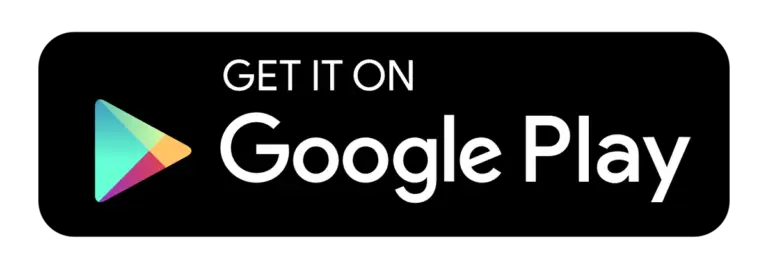

© Copyright 2025 Telecrm.in - All Rights Reserved • Privacy Policy • T&C